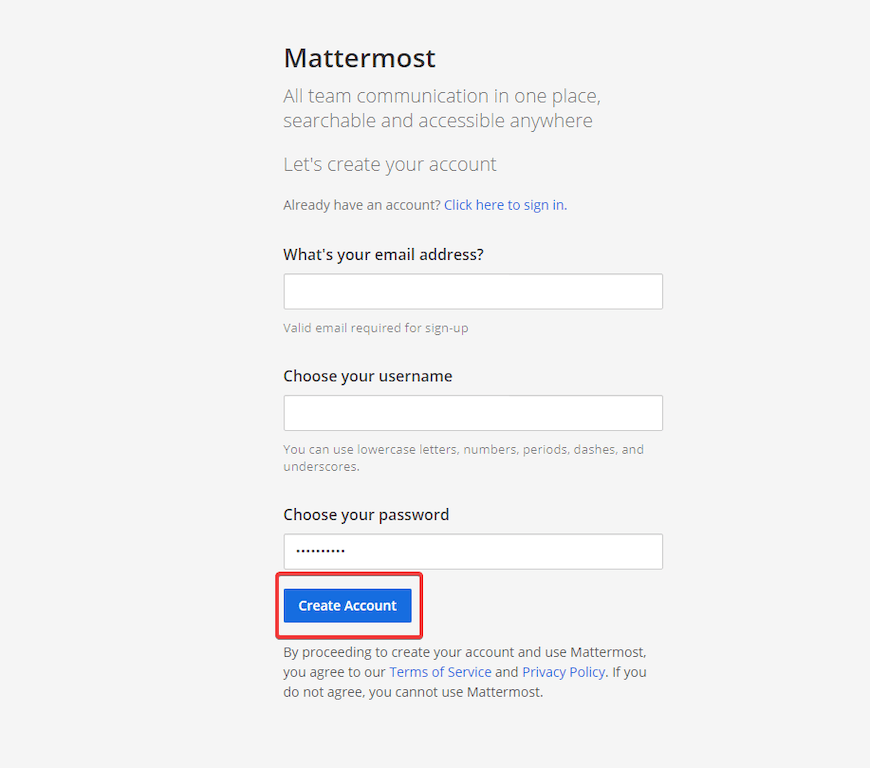How To Install Mattermost on AlmaLinux 9

In today’s fast-paced digital landscape, effective communication and collaboration are paramount for teams to thrive. Mattermost, an open-source messaging platform, provides a robust solution for organizations looking to enhance their internal communications. This guide will walk you through the step-by-step process of installing Mattermost on AlmaLinux 9, ensuring that you can set up your self-hosted communication tool with ease. Whether you’re a developer, system administrator, or tech enthusiast, this comprehensive article will equip you with the knowledge needed to get Mattermost up and running smoothly.
Prerequisites
Before diving into the installation process, it’s crucial to ensure that your system meets the necessary requirements. Here’s what you need:
- AlmaLinux 9 Server: A clean installation of AlmaLinux 9 with at least 2GB of RAM is recommended for optimal performance.
- Root Access: You should have root SSH access or a user account with sudo privileges to execute administrative commands.
- Software Packages: Familiarity with basic command-line operations and the ability to install software packages.
Step 1: Update Your System
The first step in preparing your AlmaLinux server is to ensure that all existing packages are up to date. This not only enhances security but also ensures compatibility with new software installations. Run the following commands:
sudo dnf update -y
sudo dnf upgrade -yThis will refresh your package manager and install any available updates. It’s a good practice to perform this step regularly.
Step 2: Install Required Dependencies
Next, you need to install the necessary dependencies for Mattermost to function correctly. This includes database software and other essential packages. Execute the following command:
sudo dnf install wget tar mariadb-server -yThis command installs wget for downloading files, tar for extracting archives, and MariaDB, a popular relational database management system that will serve as the backend for Mattermost.
Step 3: Set Up Database
A database is essential for storing Mattermost data. You can choose between PostgreSQL or MariaDB; this guide will focus on setting up MariaDB.
Installing MariaDB
To install MariaDB and start its service, run:
sudo dnf install mariadb-server -y
sudo systemctl start mariadb
sudo systemctl enable mariadbSecuring MariaDB Installation
After installation, it’s important to secure your MariaDB setup. Run the following command:
sudo mysql_secure_installationThis script will guide you through several prompts to enhance security, including setting a root password, removing anonymous users, and disallowing remote root login.
Creating Database and User for Mattermost
You’ll need to create a dedicated database and user for Mattermost. Access the MariaDB shell by executing:
sudo mysql -u root -pOnce inside the MariaDB shell, run the following commands:
CREATE DATABASE mattermost;
CREATE USER 'mmuser'@'localhost' IDENTIFIED BY 'your_password';
GRANT ALL PRIVILEGES ON mattermost.* TO 'mmuser'@'localhost';
FLUSH PRIVILEGES;This creates a database named mattermost, a user named mmuser, and grants all necessary privileges on the new database.
Step 4: Download and Extract Mattermost
The next step is to download the latest version of Mattermost from its official website. Use the following command:
wget https://releases.mattermost.com/10.1.1/mattermost-10.1.1-linux-amd64.tar.gzThis command downloads the latest stable release of Mattermost. After downloading, extract the files using:
tar -xvzf mattermost-10.1.1-linux-amd64.tar.gz -C /opt/The extracted files will be located in the /opt/mattermost/ directory.
Step 5: Create a Mattermost User
For security reasons, it is advisable to run Mattermost under its own user account rather than as root. Create a new system user by executing:
sudo useradd --system --user-group mattermost
sudo chown -R mattermost:mattermost /opt/mattermost/This creates a system user named mattermost, ensuring that all files in the Mattermost directory are owned by this user.
Step 6: Configure Mattermost
The configuration file needs editing to connect Mattermost with your newly created database. First, copy the default configuration file:
cp /opt/mattermost/config/config.json /opt/mattermost/config/config.defaults.jsonEdit the configuration file using your preferred text editor (e.g., nano or vim):
sudo nano /opt/mattermost/config/config.jsonYou need to modify several key settings in this file:
- “DriverName”: Set this to “mysql” if using MariaDB.
- “DataSource”:
Update this line with your database credentials:
“DataSource“: “mmuser:your_password@tcp(127.0.0.1:3306)/mattermost?charset=utf8mb4“, - “ConnectionSecurity”:
Set this according to your security preferences (e.g., “None” for local connections). - “ServiceSettings”:
Adjust settings such as site URL if necessary.
Step 7: Create Systemd Service File
A systemd service file allows you to manage Mattermost as a service easily. Create a new service file by executing:
sudo nano /etc/systemd/system/mattermost.serviceAdd the following content to define how systemd should manage Mattermost:
[Unit]
Description=Mattermost Service
After=network.target
[Service]
Type=notify
User=mattermost
Group=mattermost
ExecStart=/opt/mattermost/bin/mattermost
WorkingDirectory=/opt/mattermost
Restart=always
[Install]
WantedBy=multi-user.target
Step 8: Start and Enable Mattermost Service
The final steps involve starting the Mattermost service and enabling it to launch at boot time. Execute these commands:
sudo systemctl daemon-reload
sudo systemctl start mattermost.service
sudo systemctl enable mattermost.serviceThis reloads systemd configurations, starts the Mattermost service immediately, and ensures it starts automatically on server restarts.
Step 9: Verify Installation
Your installation should now be complete! To verify that Mattermost is running correctly, use curl or simply access it via your web browser:
curl http://localhost:8065/If successful, you should see a response indicating that Mattermost is operational. Alternatively, open your web browser and navigate to http://localhost:8065/. You should see the Mattermost setup page where you can configure your team settings.

Troubleshooting Tips
- Mattermost Fails to Start:
Check logs located in /opt/mattermost/logs/. Use:sudo journalctl -u mattermost.service -f - Error Connecting to Database:
Ensure that your database credentials in config.json are correct and that MariaDB is running. - Poor Performance:
Consider optimizing your database settings or increasing server resources. - CORS Issues:
If accessing from different domains or IPs, adjust CORS settings in config.json accordingly. - No Response from Server:
Ensure that firewall settings allow traffic on port 8065:sudo firewall-cmd --add-port=8065/tcp --permanent sudo firewall-cmd --reload - Migrating Data from Another Instance:
Follow official documentation for data migration procedures if necessary. - Email Notifications Not Working:
Verify SMTP settings in config.json for email notifications. - User Authentication Issues:
Check logs for authentication errors; consider resetting user passwords if necessary. - Error Logs Not Generating:
Ensure proper permissions are set on log directories:sud chmod -R 755 /opt/mattermost/logs/ - If All Else Fails:
Consult the official Mattermost documentation or community forums for additional support.
Congratulations! You have successfully installed Mattermost. Thanks for using this tutorial for installing Mattermost on your AlmaLinux 9 system. For additional help or useful information, we recommend you check the official Mattermost website.